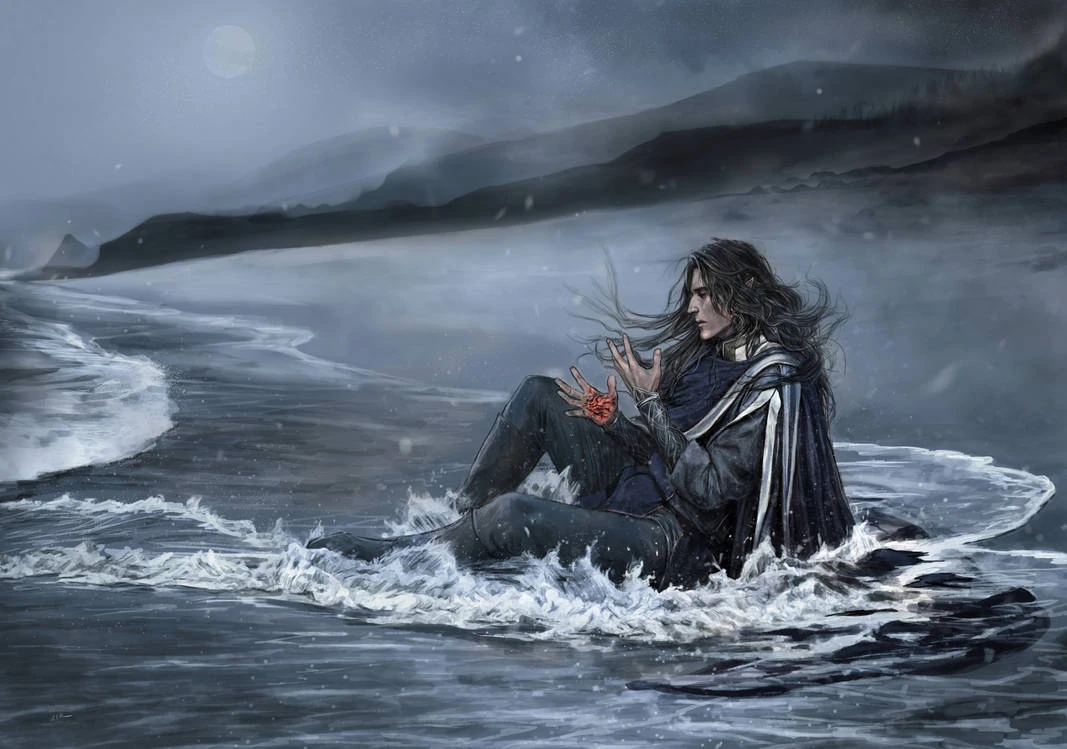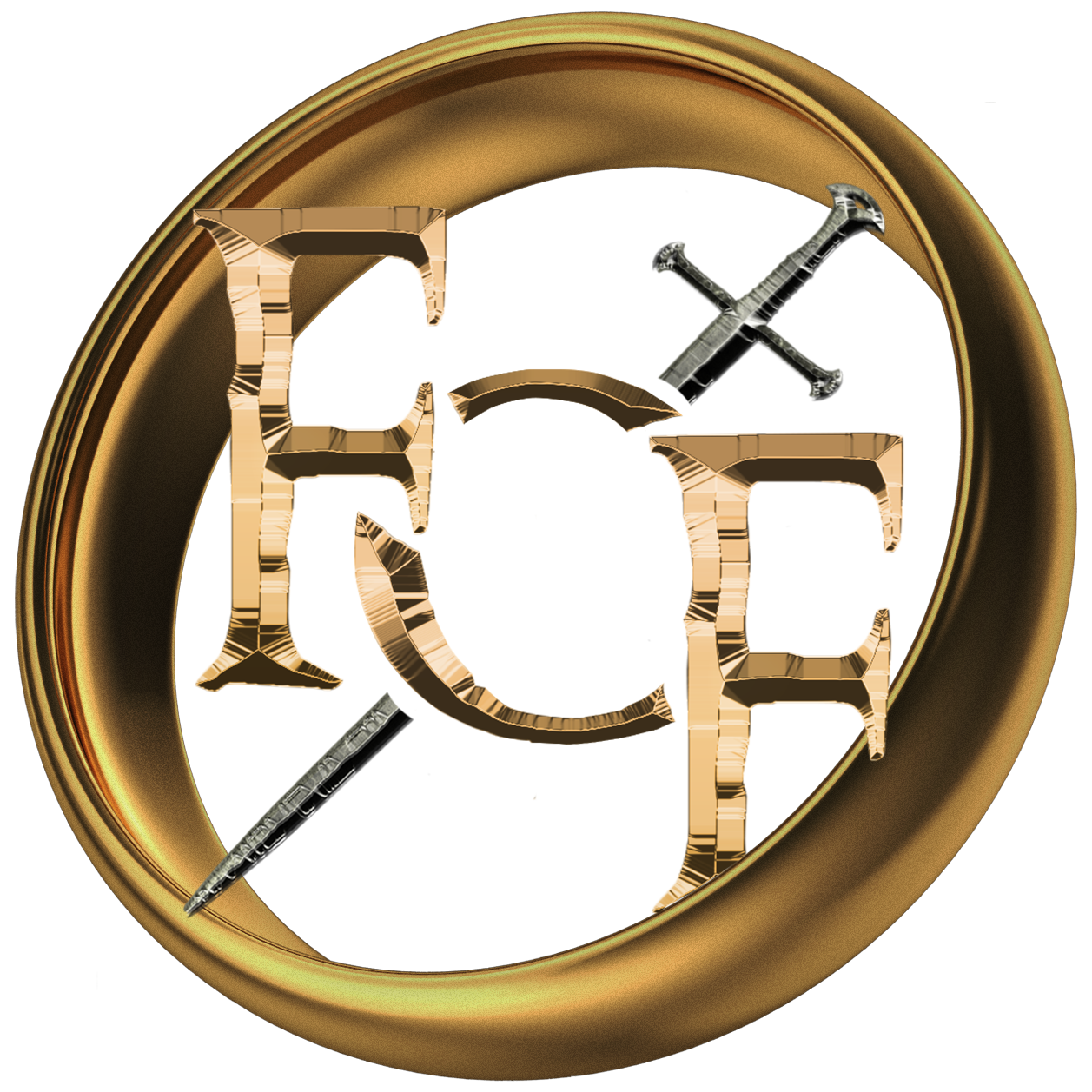
Revisiting a Rings of Power fan theory: could Adar really be Maglor?
Since we are in the run-up to season 2 of Rings of Power, I thought it would be fun to look back a pre-season 1 fan theory about who Adar is, and what Tolkien wrote that can inform this. Fair warning: this article will contain book spoilers (only) for The Silmarillion and History of Middle-earth.
In particular, I want to take a look at the theory that Adar was actually Maglor, the second son of Fëanor, and in 1977’s The Silmarillion, the only son of the seven to survive the end of the First Age. Some small details lined up, but the most suggestive to me was that Maglor’s hand was permanently burned by a Silmaril after the War of Wrath, he remained in pain thereafter, and Adar wore a single gauntlet on his left hand and was familiar with Beleriand. This idea was not just bandied around on Reddit (eg: 1, 2, 3, 4, 5, 6, 7) (where you’ll find much more evidence presented for the theory) on TikTok (eg 1,2) on YouTube (eg 1, but more often cropping up again and again in comments on various other theory videos) but even discussed in articles by Tolkien-focused sites (eg 1, 2) and even genre media outlets (eg 1, 2).
Ultimately, the information we learn about Adar in episode 6, rules out the theory—he is explicitly described as one of the original Elves taken from either the environs of Cuiviénen, or on the Great Journey of the Eldar heading west. The show uses the term Moriondor for such early ‘proto-orcs’. Incidentally, one of my favourite parts of season 1 was the discussion between Adar and Galadriel where the matter of Orc origins is explicitly covered. While Tolkien later decided against the theory that Orcs were corrupted Elves, this 1950s idea was the latest, most overall coherent and consistent version that existed when Christopher Tolkien had to assemble a version of the Silmarillion for publication (here I write ‘Silmarillion’ for the general body of texts Tolkien worked on, and ‘The Silmarillion‘ for the published book edited by Christopher). And hence that story is what appears, and what most are familiar with. It is also what Saruman explains in the Jackson adaptation of The Lord of the Rings. Rings of Power doubles down on this—possibly due to rights issues around what is contained in the text of The Lord of the Rings and what appears outside it—but also explicitly highlights the issue that Tolkien himself struggled with later in life, rather than taking it as some kind of assumed background lore and moving on.
But back to whether Adar could’ve been Maglor, according to Tolkien’s writings. It is interesting to note that while the Orcs had different origin stories later in Tolkien’s writing career, Maglor had different endings to his story. The familiar story from The Silmarillion referenced above is that Maglor and his elder brother Maedhros finally got the last two Silmarils post War of Wrath:
But the jewel burned the hand of Maedhros in pain unbearable; and he perceived that it was as Eönwë had said, and that his right thereto had become void, and that the oath was vain. And being in anguish and despair he cast himself into a gaping chasm filled with fire, and so ended; and the Silmaril that he bore was taken into the bosom of the Earth.
And it is told of Maglor that he could not endure the pain with which the Silmaril tormented him; and he cast it at last into the Sea, and thereafter he wandered ever upon the shores, singing in pain and regret beside the waves. For Maglor was mighty among the singers of old, named only after Daeron of Doriath; but he came never back among the people of the Elves. And thus it came to pass that the Silmarils found their long homes: one in the airs of heaven, and one in the fires of the heart of the world, and one in the deep waters. (The Silmarillion, Chapter 24 Of the Voyage of Eärendil and the War of Wrath)
This version of the story dates from the 1937 text ‘Quenta Silmarillion‘, which, it can be argued, is a version Tolkien was preparing to submit for publication, given The Hobbit had just appeared, and the publisher was keen for more material. As Tolkien started on what would become the The Lord of the Rings in late 1937, he soon left off writing this iteration of the Legendarium, but it is the last time he would write narrative about the War of Wrath and its aftermath. And hence, one would think, the last time he described Maglor’s ultimate fate: an immortal existence tormented by pain, in which he never returns to living amongst the elves—perhaps the most explicit support for the theory.

(Source: Entertainment Weekly)
As it turns out, no, this isn’t the last we hear of Maglor! Ironically, in (post-2007) modern editions of The Silmarillion there is before the main text an extract from a loooong letter Tolkien wrote in late 1951 that gives a very different end to Maglor’s story. Tolkien was trying to get a two-book deal out of the publisher Collins: The Silmarillion and The Lord of the Rings together. The full text of this letter—known among cognoscenti simply as ‘Letter 131‘—has only recently been published uncut in one place, in the revised Letters of J.R.R. Tolkien. And, importantly, in this letter Tolkien outlines the entire project, including the fates of Maedhros and Maglor in the Silmarillion as he conceived it at that time:
The remaining two Silmarils are regained from the Iron Crown — only to be lost. The last two sons of Fëanor, compelled by their oath, steal them, and are destroyed by them, casting themselves into the sea, and the pits of the earth. (Letter 131, To Milton Waldman)
Since Maedhros is the brother who cast himself into a pit—or chasm—this leaves us with the conclusion that Maglor yeeted not just his Silmaril into the ocean, but himself as well.
Even in 1981, when the Letters was originally published, including in particular the part of Letter 131 giving the summary of the Silmarillion, one could see that Tolkien’s ideas about Maglor’s fate had shifted…
Sometimes Tolkien’s ideas really bounce around, but pre-Lord of the Rings Maglor’s fate settled pretty quickly on him wandering in sorrow/pain/regret by the sea, and persisted through multiple versions (for History of Middle-earth readers: S edited, Q I edited, Q II, AB I edited, AB2 and QS). One letter in 1951 doesn’t really indicate a solid change in the plan, given that Tolkien made much more extensive and radical changes to his mythology in the late 1950s and into the 1960s. But it turns out that in a manuscript sent in 1964 to one Eileen Elgar, and only fully made public in 2022, Tolkien again describes Maglor’s fate:
The other two Silmarils were also taken by the Valar from the crown of Morgoth. But the last surviving sons of Feänor (Maedros and Maglor), in a despairing attempt to carry out the Oath, stole them again. But they were tormented by them, and at last they perished, each with a jewel: one in a fiery cleft in the earth, and one in the Sea. (Concerning … ‘The Hoard’)
As you can see, this description by Tokien would seemingly rule out the possibility of Adar being Maglor, where the other descriptions didn’t. Elves might be incredibly hardy and functionally immortal, but Tolkien wrote of more than one that was drowned at sea; Turgon’s wife Elenwë in the Helcaraxë, the unnamed shipmates of Voronwë in a tempestuous storm, and Amroth while swimming back to Middle-earth from his boat.
So, as with so many things in the Legendarium, we have differing sources, of different qualities (dating, completeness, detail, level of integration), telling us what Maglor did at the end of the First Age. And while ultimately, Adar didn’t turn out to be Maglor in the show, I think we can look back and see where the theory came from, and how it could have worked. In fact, given the varying fates of Maglor in Tolkien’s writings, one might even see how the theory could’ve owned the mixed reports in world—as some versions of the theory speculated. Tolkien often flags slightly ambiguous aspects (from an in-universe point of view) of his stories by a “some say”, or “the wise hold that”. The “it is told” line prefacing what happened to Maglor in the 1930 Qenta Noldorinwa and the 1937 Quenta Silmarillion leave that a tiny bit of wiggle room, a reading where one could imagine that what is there is not the whole story. But Tolkien in his ‘annalistic’ accounts, and in the letter and manuscript quoted above, is very deliberate, stating what happened to Maglor as bare fact. This leads me to think that Tolkien wasn’t being deliberately vague, but using “it is told” more as a turn of phrase.
As far as the show goes, the explanation we got in episode 6 of Adar as a proto-Uruk is water-tight, so he’s certainly not Maglor. So while we didn’t get Adar as Maglor, I think the Adar origin we got in the discussion between Adar and Galadriel shines a light on Tolkien’s theories about orcs hitherto unexplored in a screen adaption. And this is one of the valuable things about Rings of Power regardless of whether it fully achieves its lofty ambitions: it promotes a kind of literary archaeology where one can attempt to reverse-engineer the sources of inspiration even outside the known licensed text of The Lord of the Rings, as we know the showrunners, designers and actors are drawing inspiration from all across the Legendarium texts.
I’ll certainly be watching Adar with interest in season 2.




No Comments